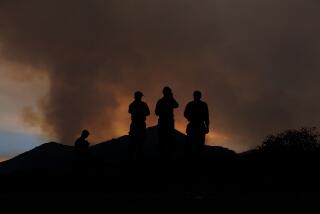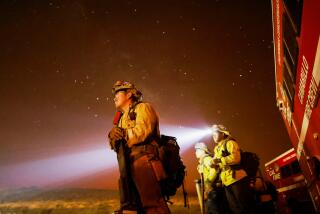Powerful storm bears down on Santa Barbara County, prompting evacuations in burn areas
Thousands of Santa Barbara County residents were ordered to evacuate Tuesday in preparation for a strong atmospheric river-fueled storm that officials worry could trigger debris flows in neighborhoods below hillsides scarred by wildfires.
The atmospheric river is predicted to bring heavy rain along much of the Central Coast, including Santa Barbara County, which is expected to receive between 2 and 3 inches of precipitation in most areas. South-facing slopes that already are saturated from heavy rain in past storms this winter could see up to 5 inches of rain over the next two days.
That could create significant flooding for the region, officials said, prompting orders to evacuate about 3,000 people living below hillsides ravaged by the Sherpa, Thomas and Whittier fires. The evacuations took effect at 4 p.m. Tuesday, Santa Barbara County Sheriff Bill Brown said.
By nighttime, heavy rain pounded the Thomas fire burn zone, dumping 0.24 inches in just 9 minutes, the National Weather Service said. Highway 1 was closed in both directions at Oso Flaco Road near Guadalupe because of roadway flooding, according to the California Department of Transportation.
Thunderstorms produced a dramatic lightning show. In one five-minute stretch shortly after 8 p.m., forecasters recorded 1,489 pulses of lightning off the coast, 231 over Santa Barbara County and 40 in Los Angeles County, said Kathy Hoxsie, a meteorologist with the weather service in Oxnard.
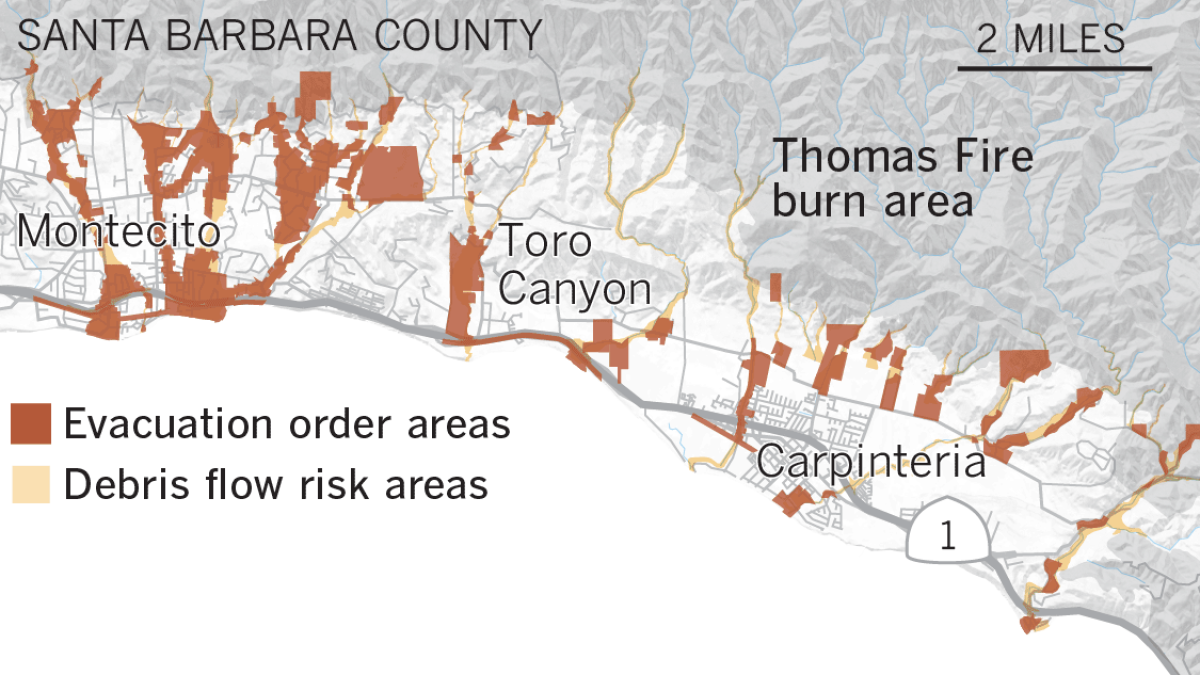
Deputies began walking door to door in the evacuation areas early Tuesday to alert residents to prepare to leave.
“Our hope is that without any significant debris flow, we’ll be able to return people to their homes within 24 hours,” Brown said during a news conference Monday night. “We do not take these evacuation orders lightly, and while we do know this is very inconvenient, if you are in an evacuation area, please know there is a high risk to life and property.”
An evacuation center will be open at the Goleta Valley Community Center at 5679 Hollister Ave.
The strongest rainfall in the area is expected to last through 6 a.m. Wednesday. There’s also the potential for thunderstorms, which could dump even more rain on the area, forecasters said.
The weather service issued a flash flood watch for all burn areas in Santa Barbara, Ventura and Los Angeles counties beginning Tuesday evening and continuing into early Wednesday. However, the storm is expected to weaken slightly as it moves south into Los Angeles County, forecasters said.
Between 1.5 and 2 inches of rain is expected to fall in Malibu, Woodland Hills, Santa Clarita and Pasadena through early Thursday, while the rest of Los Angeles will likely see about an inch or slightly more than an inch of precipitation, according to the weather service.
Santa Barbara sheriff’s and fire officials said this week’s atmospheric river will be similar in intensity to an early February storm that caused debris flows and flooding in the region.
Atmospheric rivers are long, narrow bands of water vapor that are pushed across the Pacific Ocean by gusty winds. When strong enough, they can account for a disproportionate amount of the annual precipitation — between 30% and 40% — on the West Coast, according to experts. However, they also carry with them the potential for flooding and debris flows.
Highway 101 was closed for several hours between Sheffield Drive and San Ysidro Road in Montecito during the February storm because of mudflows caused by flooding around swollen Romero and San Ysidro creeks. The California Highway Patrol warned that it may need to close the highway during this storm and urged travelers and other motorists to avoid the area.
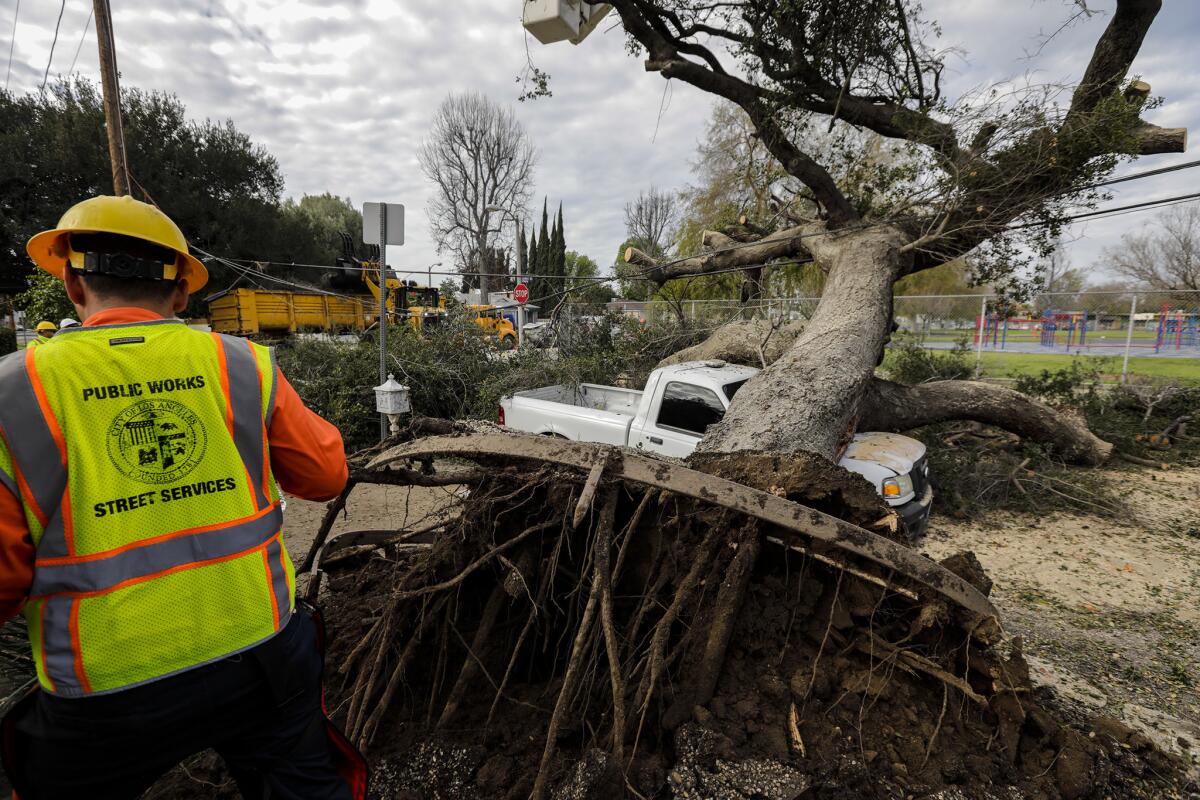
The evacuation order comes amid a period of recovery for the community following the deadly mudslides that swept through Montecito, destroying homes and killing at least 21 people in January 2018 following the Thomas fire’s treacherous tear through the Los Padres National Forest.
Brown said basins constructed to catch debris have been “essentially completely cleaned out” in preparation for this storm. During the storm that triggered catastrophic mudslides in 2018, a Los Angeles Times investigation determined that the basins had not been completely emptied, which reduced their capacity to trap debris.
“They’re a protective measure, but they’re not completely going to stop something from happening in the event we have a major debris flow,” Brown said.
Officials urged residents to comply with the evacuation order, warning that if they stay and a debris flow occurs, they could be trapped in their homes for several days.
“Persons who refuse to comply with an evacuation order will not be forcibly removed from their home,” the county wrote on Twitter. “However, they should not expect rescue or other lifesaving assistance after the onset of the emergency event.”
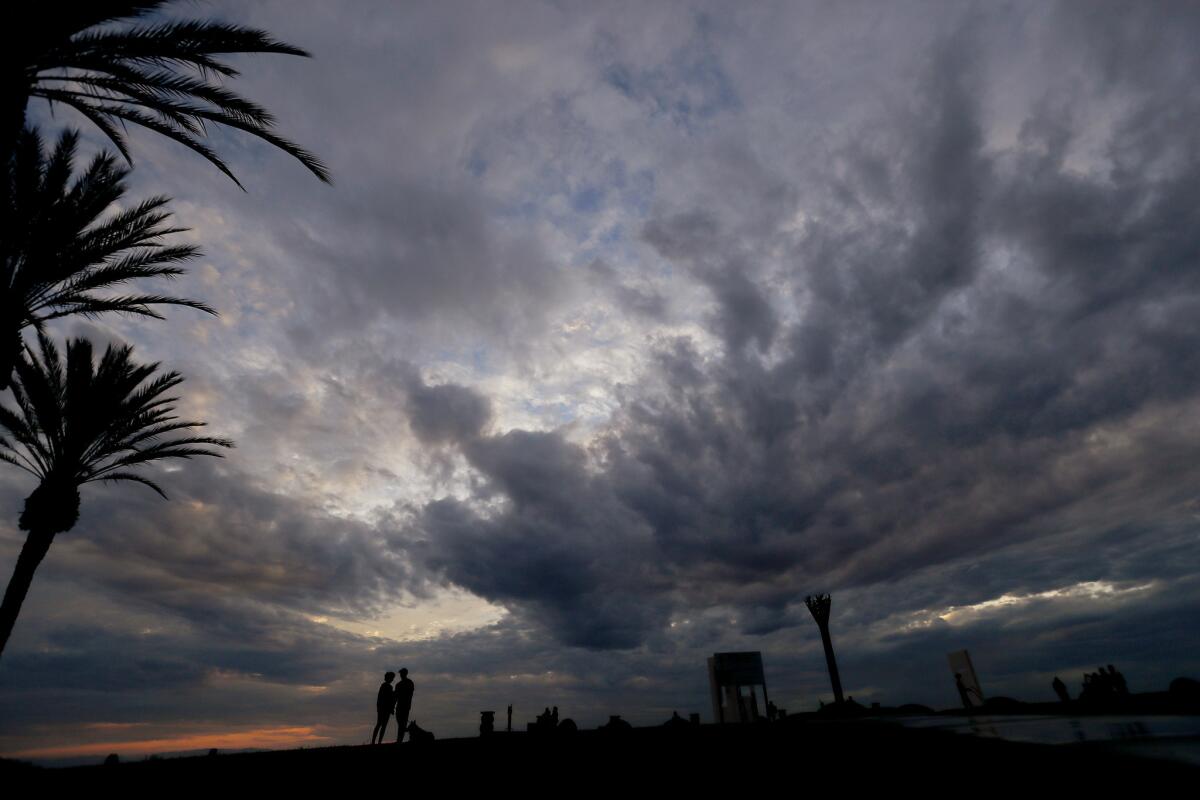
Times staff writer Alene Tchekmedyian contributed to this report.
Twitter: @Hannahnfry
More to Read
Sign up for Essential California
The most important California stories and recommendations in your inbox every morning.
You may occasionally receive promotional content from the Los Angeles Times.

